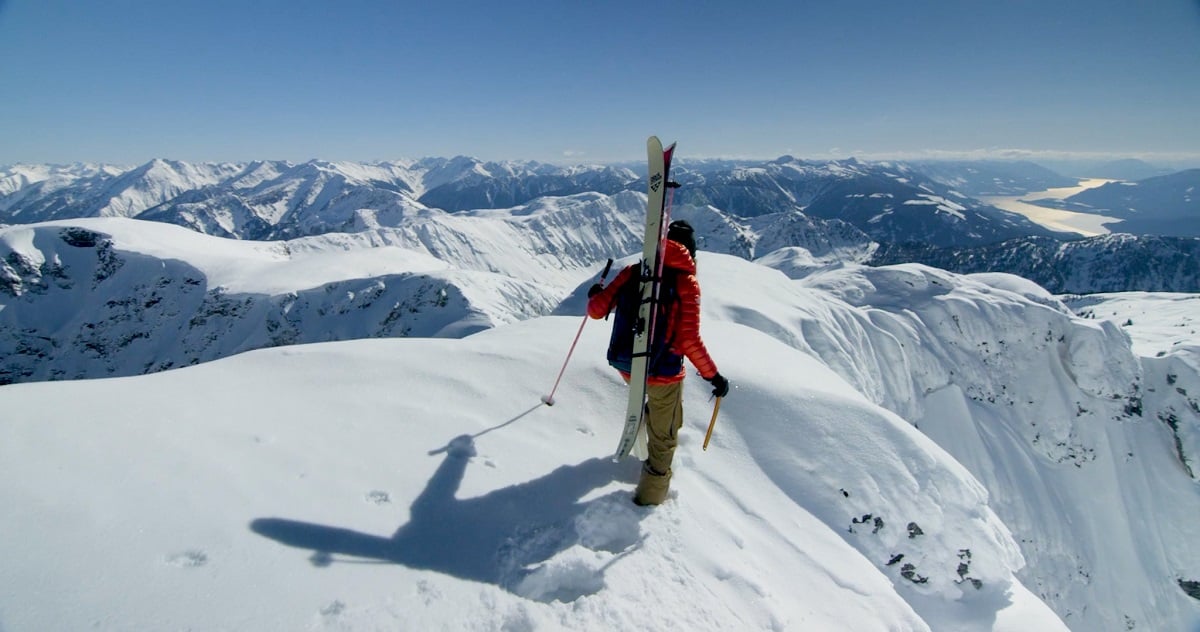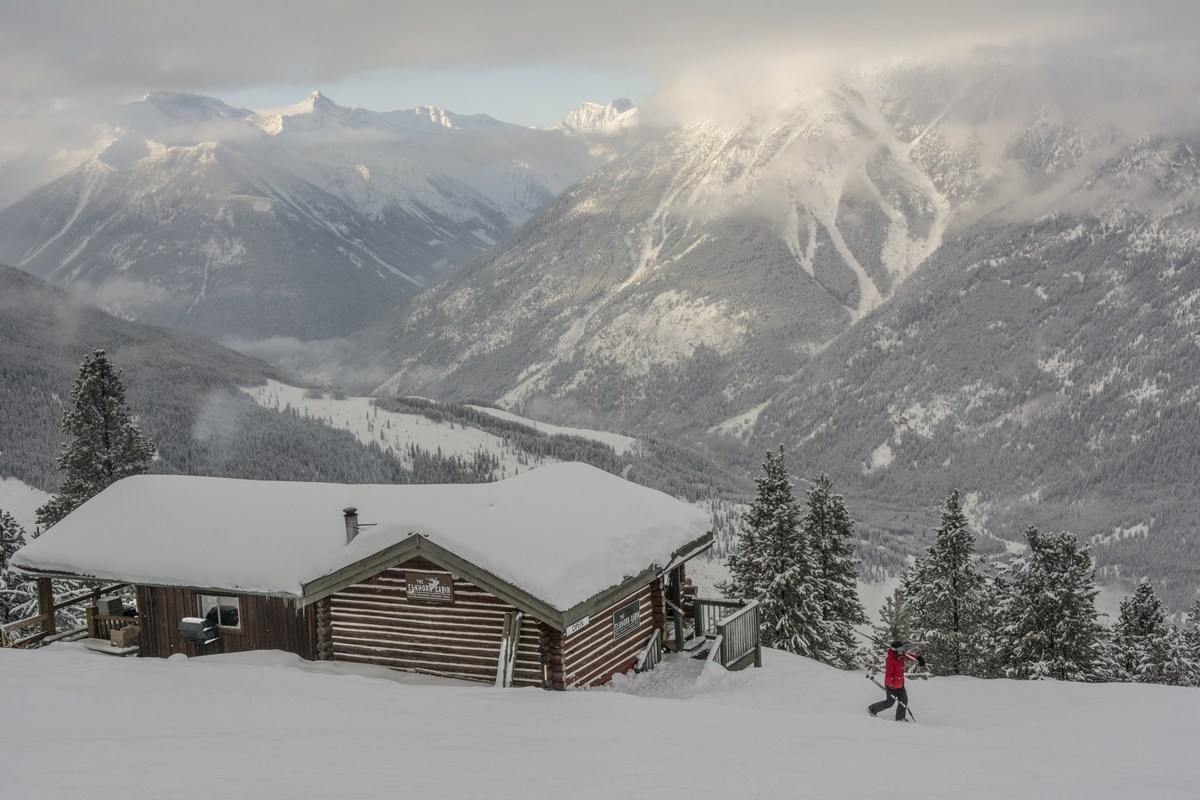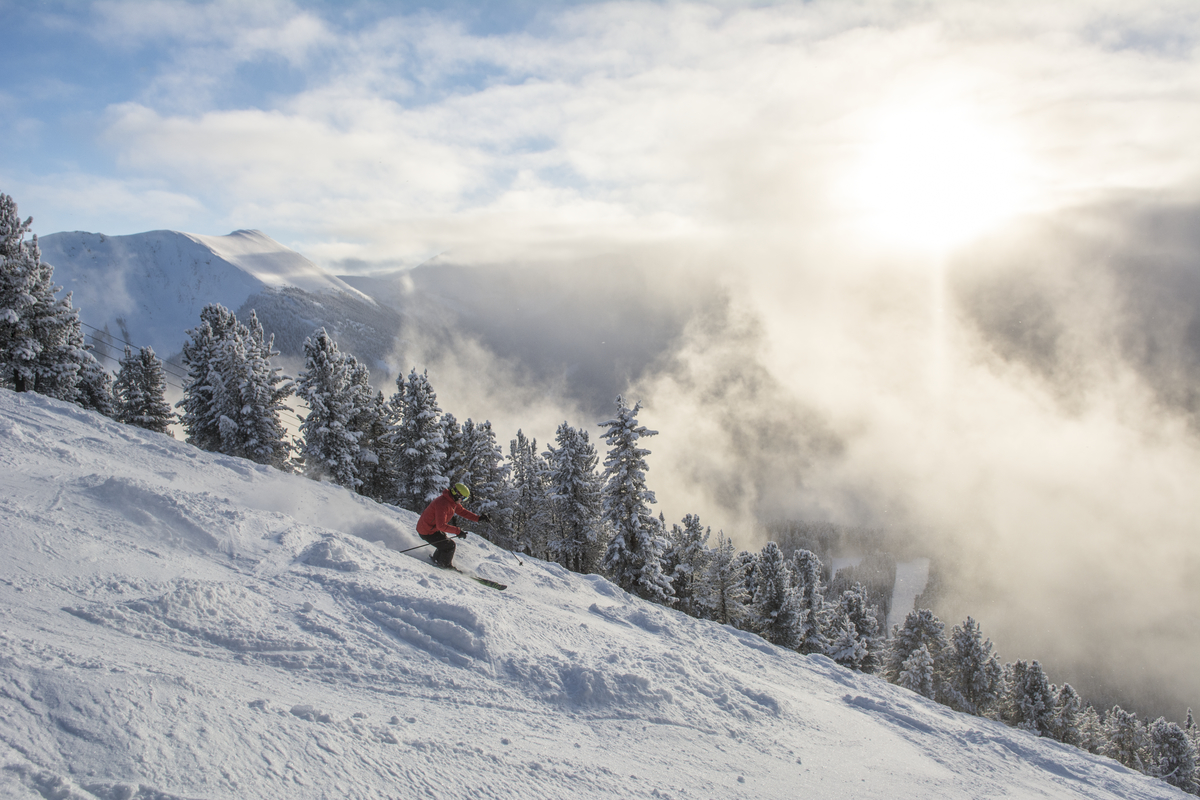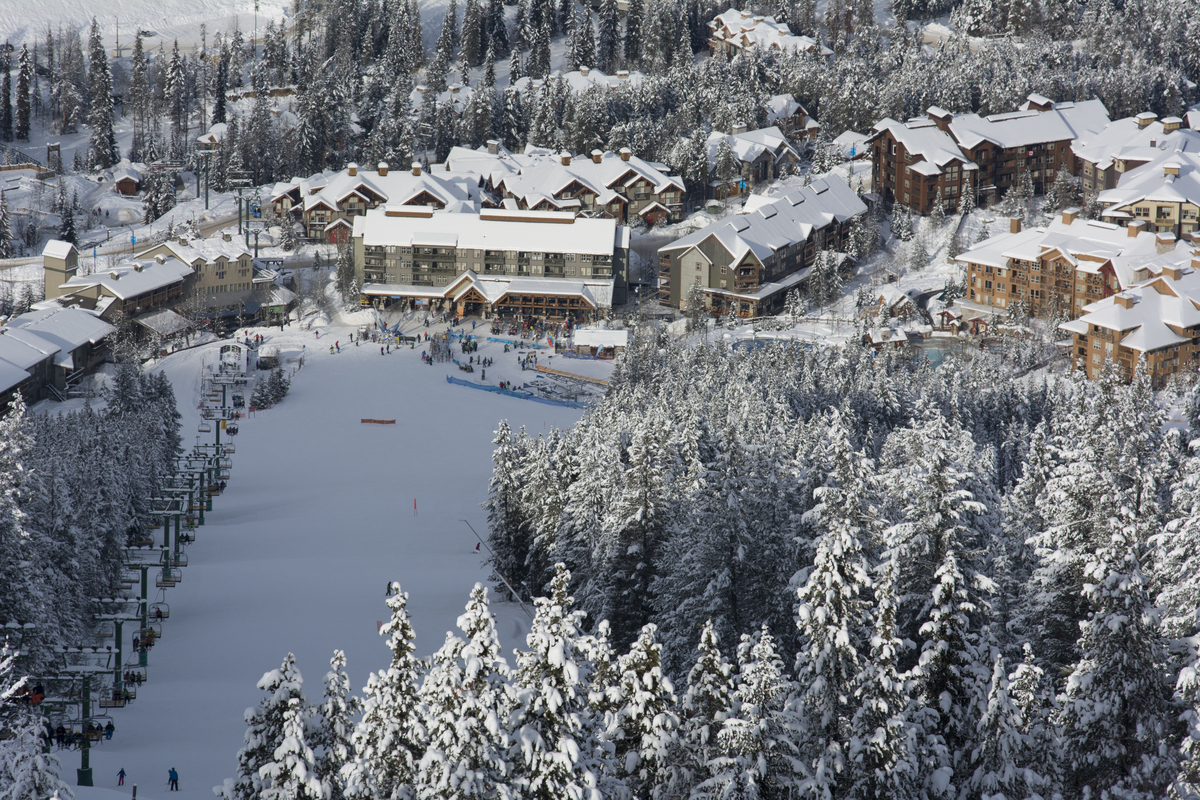Before there was a career—with its film cameras, steep lines, backcountry clients, and first descents—there was an idea. And in a way the whole idea of Lustenberger’s life sprang from BC’s snow and mountains themselves.
Her parents met while working at heli-ski giant CMH Heli-Skiing & Summer Adventures‘ Monashee Lodge. They put skis on their two daughters’ feet as soon as the girls could walk. The girls chased each other around Panorama Mountain Resort while Mom and Dad ran Lusti’s, their slopeside ski shop and café.
At the family’s nearby home in Invermere, nestled between the BC Rockies and the Columbia Mountains, the living room window looked onto Mount Nelson, a striking 3,330-metre (10,870-foot) summit. While her mother read her a children’s book called Mountains of Tibet and Nelson loomed like a beacon, the littlest Lustenberger began to dream. What would it be like to adventure into such rugged, high peaks and ski them?










